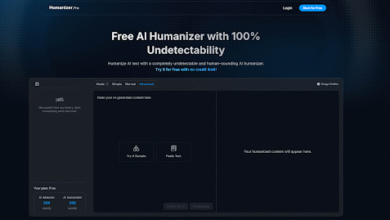What to Know Before Moving to the Cloud

As cloud computing continues to reshape the digital landscape, organisations worldwide are reassessing their technology strategies to harness the cloud’s transformative potential. From small startups to multinational enterprises, the cloud is no longer a futuristic ideal—it’s a business imperative.
By offering unmatched flexibility, rapid scalability, and potential cost efficiencies, the cloud enables businesses to innovate faster and respond to changing market dynamics more effectively. Yet, despite its benefits, moving to the cloud is not without complexity. Poor planning or unclear goals can lead to spiralling costs, compliance issues, or underperformance. That’s why a strategic, well-informed approach is essential.
This guide provides a comprehensive overview of what organizations need to know before moving to the cloud, helping stakeholders navigate the challenges and seize the opportunities of cloud transformation.
Understand Your Business Needs and Goals
Before any cloud migration begins, it’s crucial to understand why the move is happening. The first step involves a clear-eyed assessment of the current IT environment—what works, what doesn’t, and where improvements are needed. Are legacy systems limiting growth? Is downtime affecting customer experience? Is scalability an issue during seasonal demand spikes?
Establishing defined business goals—such as increasing operational agility, reducing capital expenditures, or enabling remote collaboration—is vital. These objectives will shape every decision, from choosing the right cloud model to determining security protocols. Businesses should also map out their mission-critical applications and assess the sensitivity of the data involved. Applications that require real-time performance or involve personally identifiable information (PII) may require special consideration.
Types of Cloud Models and Deployment Options
Not all clouds are created equal, and the architecture you choose must align with your goals. There are four primary deployment models:
- Public Cloud: Operated by third-party providers like AWS, Azure, or Google Cloud. Ideal for scalability and lower upfront costs.
- Private Cloud: Hosted on-premises or by a third party but dedicated solely to one organization. Suitable for businesses with strict compliance or performance requirements.
- Hybrid Cloud: A mix of public and private cloud infrastructures, enabling data and application portability between environments.
- Multi-Cloud: Utilizes services from multiple public cloud vendors to avoid lock-in and increase redundancy.
Each model has trade-offs. Public clouds are flexible but may offer less control. Private clouds offer high security but come with higher maintenance costs. The hybrid model often serves as a transitional or long-term solution for businesses seeking balance.
Choosing the right model depends on various factors—security needs, regulatory requirements, existing IT investments, and budget. Consulting with experts can help determine which architecture best supports business objectives. If unsure where to start, it may be wise to talk to a data expert at QuartileX for guidance tailored to specific use cases.
Security and Compliance Considerations
Security is often the top concern when it comes to cloud adoption. While cloud providers invest heavily in securing their infrastructure, the responsibility for protecting data is shared. This is known as the shared responsibility model, where the cloud provider secures the physical infrastructure, and the customer is responsible for securing data, user access, and configurations.
Compliance adds another layer of complexity. Regulatory frameworks such as GDPR, HIPAA, or SOC 2 mandate stringent data handling and reporting requirements. Failure to comply can result in substantial fines and reputational damage.
Organizations must ensure that any cloud solution is compliant with applicable laws and that the provider offers the necessary certifications. Implementing robust identity and access management (IAM), encryption, and routine audits are key to maintaining a secure cloud environment.
Cost Implications and Budget Planning
One of the most touted benefits of cloud computing is cost efficiency, but this only holds true with proper planning. Cloud billing is complex, with variables such as compute time, storage capacity, data egress, and support tiers.
Organizations can choose between pay-as-you-go models, which offer flexibility, or reserved instances, which lock in resources at a lower rate for long-term use. However, hidden costs—such as data transfer charges, API calls, and unused reserved capacity—can quickly erode cost savings.
Optimizing the existing use of clouds (cost savings) is a priority for cloud initiatives for 69 per cent of respondents in 2025. This highlights the need for cost governance from the start. Budget forecasting tools, monitoring dashboards, and cloud cost management platforms can help identify waste and refine spending.
Data Migration Challenges and Strategies
Data migration is often underestimated in complexity and scope. Transferring large volumes of structured and unstructured data while ensuring integrity, minimal downtime, and business continuity requires careful planning.
Common challenges include:
- Data compatibility issues
- Network latency or transfer limits
- Ensuring consistency across environments
- Legacy system dependencies
To mitigate risks, businesses should adopt a phased migration strategy, including pre-migration assessments, pilot testing, and rollback procedures. Using tools like AWS Data Migration Service or Azure Migrate can simplify and automate parts of the process. Maintaining frequent backups and conducting validation tests ensures the migration doesn’t disrupt critical operations.
Impact on IT Teams and Change Management
Cloud migration is not merely a technical endeavour—it’s an organizational shift. It redefines how IT teams operate, shifting from hardware maintenance to cloud service management and DevOps practices.
Traditional infrastructure roles evolve into cloud architects, FinOps analysts, or security specialists. Upskilling through certification programs (e.g., AWS Certified Solutions Architect or Azure Fundamentals) is essential to prepare staff for the new environment.
Equally important is change management—the people side of transformation. Effective change management involves early stakeholder involvement, clear communication, and continuous training. Without buy-in and preparation, even technically successful migrations can fail due to poor user adoption.
Performance, Reliability, and Vendor Lock-In Risks
Cloud performance and uptime are governed by Service Level Agreements (SLAs), which define metrics like uptime, latency, and support response times. However, SLAs vary widely among providers, and it’s critical to read the fine print. A 99.9% uptime guarantee may sound impressive, but it still equates to more than eight hours of downtime annually.
Another concern is vendor lock-in. Once a business is deeply integrated into a single cloud ecosystem—using proprietary APIs, storage formats, or management tools—switching providers becomes difficult and costly.
To mitigate this risk, organizations should:
- Use open-source tools and platforms
- Adopt containerization (e.g., Kubernetes)
- Design with portability in mind from the start
Cloud-native doesn’t have to mean cloud-dependent. Building with flexibility allows businesses to switch or expand providers without being tied down.
Monitoring, Management, and Governance in the Cloud
The cloud is dynamic—resources scale automatically, usage patterns shift rapidly, and security threats evolve constantly. That’s why ongoing monitoring and governance are non-negotiable.
Modern cloud management platforms provide dashboards to monitor usage, performance, security events, and compliance metrics in real-time. Automated policies can control costs, enforce encryption, and manage user access based on defined governance rules.
Best practices include:
- Implementing tagging strategies for resource identification
- Setting up alerts for cost thresholds
- Conducting regular security audits
- Defining role-based access controls
Cloud governance ensures that the infrastructure remains secure, compliant, and aligned with business goals long after the migration is complete.
Conclusion
Migrating to the cloud is a strategic decision with far-reaching implications. From assessing infrastructure and selecting deployment models to managing security, compliance, and costs, success depends on meticulous planning and expert execution.
Organizations must approach cloud adoption not as a simple IT project but as a transformation initiative that touches every part of the business. The good news? When done correctly, cloud migration can unlock new levels of agility, innovation, and competitiveness.
Given the complexity involved, it’s often valuable to Talk to a data expert at QuartileX for tailored advice, migration strategies, and long-term cloud optimization support.




